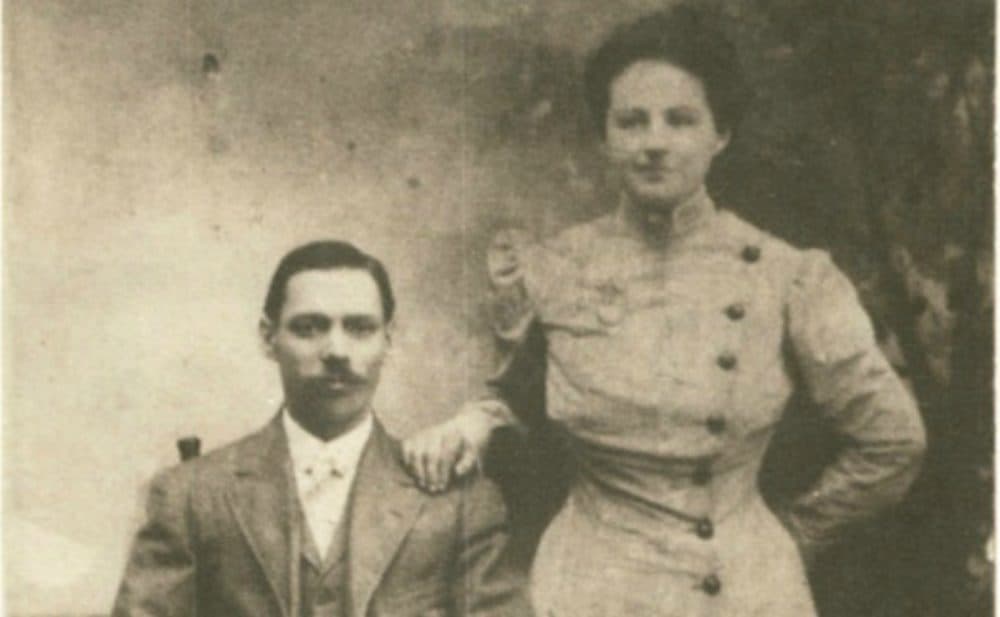Advertisement
commentary
How The 1918 Pandemic Haunted My Family For Generations

Alfred, who was 5, cowered under his brother's crib as the wailing sounds of hearts breaking filled the apartment in Chelsea. It was 1918, and his father, Emmanuel, had just died at 37 from the Spanish flu. Alfred would become my father.
That September day, during the second, more deadly wave of the flu, and nine months after the pandemic began, Emmanuel succumbed to the pneumonia racking his lungs. The working poor didn’t have many options for health care.
Emmanuel had immigrated to the United States to escape the political unrest always simmering in Austria-Hungary. He and his brother-in-law left their home first, before they were imprisoned for protesting the discrimination against the Poles in the massive empire ruled by a single monarch. Emmanuel's wife, Stella, 17, followed with her mother and one young child, arriving at Ellis Island. They escaped to “the land of milk and honey,” as Stella called it, but they found the life of the working poor in America was neither.
They escaped to 'the land of milk and honey' ... but they found the life of the working poor in America was neither.
They lived in the triple-decker apartment in Chelsea. Emmanuel went to work as a machinist to keep his family — including, eventually, five children -- from starving and to keep the heat on, so they wouldn’t have to sell their belongings or burn their furniture again to stay warm, as they did one winter when they first arrived.
After Emmanuel died, my father, Alfred, had to go to work at age 9, selling papers, working in rag shops, washing dishes in restaurants as the years passed. His widowed mother remarried, to an abusive man. She gave birth to more children, more mouths to feed, until Stella died of cancer when my father was 17. Stella was buried in the cemetery plot with Emmanuel, near her mother.
The picture of my grandparents on their wedding day, the sepia-toned image of a seated man with his bride’s hand placed lovingly on his shoulder, was the only image my family had of the man who would die at the later end of that century’s pandemic.
The damage done by the flu virus didn't end with the loss of life.
Emmanuel wasn't there to guide his son, to teach him how to love a family, to live in the world, to provide the comfort of being cared for. The wounds of that little boy festered in the man who would become our father, spewing forth into the life he would create with his own family. The generational trauma haunting, the ghosts of the past ever whispering, embedded in the psychological DNA. The social skills my father never learned would cross the line from discipline to punishment, an underlying current of violence permeating our lives.
Advertisement
The wounds of that little boy, festered in the man who would become our father, spewing forth into the life he would create with his own family.
In 1918, between 40,000 and 50,000 people lived in Chelsea, a city of two square miles. The virus, brought by sailors to a ship docked in Boston Harbor, then to the Chelsea Naval Hospital, had free rein in the city of immigrants, of the working poor. They were crammed into those triple-decker buildings close enough to shimmy up, back against one building and feet on the other, as my sister and her friends would do decades later. Close enough that the wailing sounds of grief would echo through Chelsea’s streets as the virus picked this one, then that one, randomly, leaving the survivors with the trauma of the loss. But then, in 1918, they were just immigrants.
A century later, that same city of immigrants would face another virus, another invisible enemy. Chelsea is still a city of 40,000, the population still immigrants — though now escaping violence and oppression in countries in Central and South America — much as my grandparents had a century earlier from Europe in pre-World War II turmoil. Still the working poor, now primarily Hispanic, most residents of Chelsea are the essential workers who had no option to stay home and work from the comfort of a living room. The working poor still do not have many options for health care. As of Nov. 12, Chelsea had 4,265 total confirmed cases of COVID-19 and 152 related deaths, continuing in the high-risk red zone.
A century after Alfred lost his father during the flu pandemic, somewhere in Chelsea, a little boy huddles under his younger brother’s crib. The COVID-19 virus takes another victim. The grief of a loss that upends another life, shapes a family and creates trauma that will wind like a snake through the generations, spewing venom along the way.
But in 2020, as in 1918, they were just immigrants.
